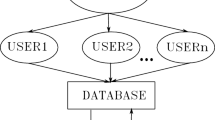Abstract
With the complexity of modern vehicles tremendously increasing, quality engineers play a key role within today’s automotive industry. Field data analysis supports corrective actions in development, production and after sales support. We decompose the requirements and show that association rules, being a popular approach to generating explanative models, still exhibit shortcomings. Interactive rule cubes, which have been proposed recently, are a promising alternative. We extend this work by introducing a way of intuitively visualizing and meaningfully ranking them. Moreover, we present methods to interactively factorize a problem and validate hypotheses by ranking patterns based on expectations, and by browsing a cube-based network of related influences. All this is currently in use as an interactive tool for warranty data analysis in the automotive industry. A real-world case study shows how engineers successfully use it in identifying root causes of quality issues.
Similar content being viewed by others
References
Blumenstock A, Hipp J, Kempe S, Lanquillon C, Wirth R (2006) Interactivity closes the gap. In: Ghani R, Soares C(eds) Data mining for business applications: KDD-2006 workshop. ACM, New York
Borgelt C, Kruse R (2002) Induction of association rules: apriori implementation. In: Klinke S, Ahrend P, Richter L(eds) Computational statistics. Proceedings of the 15th CompStat 2002. Physica-Verlag, Heidelberg
Darroch JN, Ratcliff D (1972) Generalized iterative scaling for log-linear models. Ann Math Stat 43: 1470–1480
Elomaa T, Rousu J (1999) General and efficient multisplitting of numerical attributes. Mach Learn 36(3): 201–244
Elomaa T, Rousu J (2001) On the computational complexity of optimal multisplitting. Fund Informa 47(1–2): 35–52
Gondek D, Hofmann T (2007) Non-redundant data clustering. Knowl Inform Syst 12(1): 1–24
Hipp J, Güntzer U, Nakhaeizadeh G (2000) Algorithms for association rule mining—a general survey and comparison. SIGKDD explorations 2(1): 58–64
Hofmann H, Siebes A, Wilhelm A (2000) Visualizing association rules with interactive mosaic plots. In: KDD 00: proceedings of the sixth ACM SIGKDD international conference on knowledge discovery and data mining. ACM, New York, pp 227–235
Jaroszewicz S, Scheffer T (2005) Fast discovery of unexpected patterns in data, relative to a bayesian network. In: KDD 05: Proceedings of the eleventh ACM SIGKDD international conference on knowledge discovery and data mining. ACM, New York, pp 118–127
Jaroszewicz S, Simovici D (2002) Pruning redundant association rules using maximum entropy principle. In: PAKDD’02: Proceedings of the sixth Pacific-Asia conference on advances in knowledge discovery and data mining. Taipei, Taiwan, pp 135–147
Knobbe AJ, Ho EKY (2005) Numbers in multi-relational data mining, In: Knowledge discovery in databases: PKDD 2005’. Springer, Heidelberg, pp 544–551
Liu B, Hu M, Hsu W (2000) Multi-level organization and summarization of the discovered rules. In: KDD 00: Proceedings of the sixth ACM SIGKDD international conference on knowledge discovery and data mining. ACM, New York
Padmanabhan B, Tuzhilin A (2000) Small is beautiful: discovering the minimal set of unexpected patterns. In: KDD 00: Proceedings of the sixth ACM SIGKDD international conference on knowledge discovery and data mining. ACM, New York, pp 54–63
Piatetsky-Shapiro G (1991) Discovery, analysis, and presentation of strong rules. In: Piatetsky-Shapiro G, Frawley W(eds) Knowledge discovery in databases. AAAI/MIT Press, Cambridge, pp 229–248
Sahar S (1999) Interestingness via what is not interesting. In: KDD 99: Proceedings of the fifth ACM SIGKDD international conference on knowledge discovery and data mining. ACM, New York, pp 332–336
Scholz M (2005) Sampling-based sequential subgroup mining. In: KDD 95: Proceedings of the eleventh ACM SIGKDD international conference on knowledge discovery and data mining. ACM, New York, pp 265–274
Silberschatz A, Tuzhilin A (1995) On subjective measures of interestingness in knowledge discovery. In: KDD 95: Proceedings of the first ACM SIGKDD international conference on knowledge discovery and data mining. ACM, New York, pp 275–281
Spirtes P, Glymour C, Scheines R (2001) Causation, Prediction, and Search. MIT Press, Cambridge
Srikant R, Agrawal R (1997) Mining generalized association rules. Future Generation Computer Systems 13(2–3): 161–180
Steinbach M, Kumar V (2007) Generalizing the notion of confidence. Knowl Inform Syst 12(3): 279–299
Yan X, Cheng H, Han J, Xin D (2005) Summarizing itemset patterns: a profile-based approach. In: KDD 05: Proceedings of the eleventh ACM SIGKDD international conference on knowledge discovery and data mining. ACM, New York
Zhao K, Liu B, Benkler J, Xiao W (2006) Opportunity map: Identifying causes of failure—a deployed data mining system. In: KDD 06: Proceedings of the 12th ACM SIGKDD international conference on knowledge discovery and data mining. ACM, New York
Author information
Authors and Affiliations
Corresponding author
Rights and permissions
About this article
Cite this article
Blumenstock, A., Schweiggert, F., Müller, M. et al. Rule cubes for causal investigations. Knowl Inf Syst 18, 109–132 (2009). https://doi.org/10.1007/s10115-008-0141-7
Received:
Revised:
Accepted:
Published:
Issue Date:
DOI: https://doi.org/10.1007/s10115-008-0141-7




